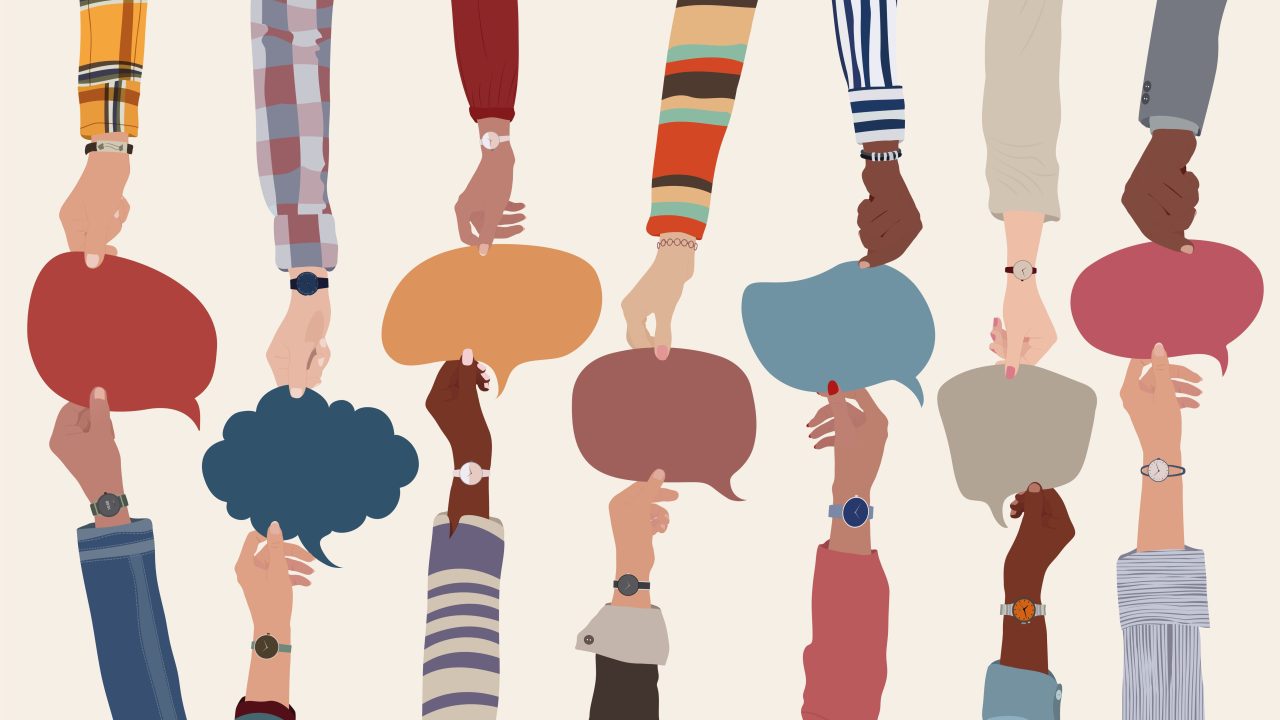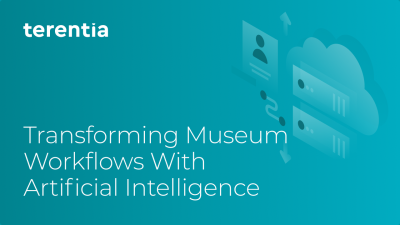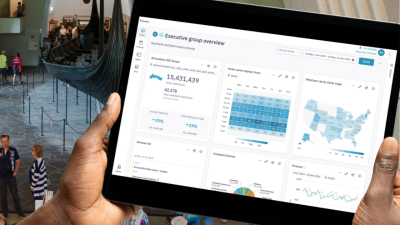
Recently, we hosted a webinar with museum leaders on values-based communications for diversity, equity, accessibility, and inclusion (DEAI). While all attendees were eager to commit fully to DEAI, many acknowledged the risks of doing so in polarized times, when divisive rhetoric about DEAI initiatives means the potential for backlash is high. In some cases, this backlash could mean more than a public relations crisis. What if something they do leads to a reduction in funding or patronage?
Their concerns are not uncommon. In our DEAI consulting work with other cultural institutions, like public media organizations, we’ve seen similar moral quagmires where people want to be brave, but not if it’s going to undermine their organizations. This fear is only heightened for non-profits and government entities, which are legally required to be non-partisan, and want to avoid the perception that they aren’t. While organizations can certainly take a stand on DEAI without telling people who to vote for, they are still likely to face criticism for doing so.
So how do you maintain the courage to keep going with your efforts, while feeling secure that they’re appropriate for a non-partisan organization? We suggest a framework inspired by Doctors Without Borders, which takes a values-based approach to analyzing why and when to speak out about atrocities. Before seeking to engage the public about social issues, we advise cultural organizations like public media and museums to be clear about their values and boundaries. And to define those values and boundaries, we recommend following what we call the 4 Ds of non-partisan DEAI:
- Invite Difference
- Reject Dehumanization
- Combat Disinformation
- Defend Democracy
Let’s explore what we mean by each one.
#1. Invite Difference
The D in DEAI stands for diversity. To commit to DEAI means you are committing to inviting people with different ideas and lived experiences into your organization. Your job, as a leader or a colleague, is to help build bridges across this difference. This may mean starting with what you have in common, but it will also require being able to see worth in what makes someone different from you.
When it comes to communicating about DEAI, embracing these differences in perspective can be a useful lesson. Inexperienced practitioners often make the mistake of thinking the work is about getting everyone to have the same mindset or prioritize the same values. That is not realistic, nor is it wise. Sometimes making progress can mean helping people see how their values intersect with yours, like convincing your CFO of the financial benefits of investing in inclusion and equity.
Skip over related stories to continue reading article
#2. Reject Dehumanization
Dehumanization is the process by which certain individuals or groups are portrayed as less-human “others.” It’s easy to see this on large, violent scales like genocide, but it actually starts much earlier, in more commonplace ways that we often miss.
Dehumanization happens when employers treat workers like robots rather than people, by refusing to provide safe working conditions or allow breaks. It happens when we refer to people experiencing addiction or mental illness with judgmental terms like “junkie” or “crazy,” instead of showing empathy for them. It even happens in the museum sector, when institutions sensationalize or make light of traumatic history, like violent imprisonment.
Sometimes dehumanization can come from good intentions, like when we share videos of people with disabilities getting married or running a race to celebrate how they’ve “overcome the odds,” even though they’re just engaging in the same human activities as everyone else. As Emily Ladau explains in her book Demystifying Disability, “inspiration porn” like this can be insidiously dehumanizing, because it reduces people to one-dimensional characters who are only valued for how they overcome obstacles, with an undercurrent of pity or schadenfreude.
Working to stop this cycle of dehumanization in our society should be at the core of your commitment to DEAI, and a guiding value of what you prioritize in engaging the public. It is not something that will happen overnight, and it will often lead to the need to adopt new language, which is where you will likely experience pushback. To handle that scenario, leaders should be able to articulate how old language is dehumanizing and inaccurate while new language is more humanizing and accurate. They should also pick their battles on this front; if people feel they are being shamed for not using the perfect word, they will shut down and reject any progress on DEAI. As Minal often says, intellectual snobbery is the Achilles heel of DEAI.
Rejecting dehumanization may also involve making tough decisions that align with your values more than your pocketbook, like limiting whose support you will accept. We know one public media leader, for instance, who has a gift acceptance policy that mandates their station return money from any donor who expresses racist views. The station then enforced the policy by returning a one-hundred-dollar donation from a listener who called to express that she didn’t like how “Black” the station was starting to sound. Returning the money did not affect the station’s budget, and the incident was never made public, but it sent a clear and galvanizing signal to staff that leadership was willing to take action to live up to the organization’s values.
#3. Combat Disinformation
When Minal first came up with this framework for her book Equity: How to Design Organizations Where Everyone Thrives, she only listed three Ds for non-partisan DEAI. We’ve since added this principle on disinformation in response to our work with public media organizations, many of which aim to solve the crisis we face in journalism today, where well-researched news is paywalled and disinformation is free.
However, combating disinformation is also the purview of museums. Research has shown that nonprofits are often seen as significantly more trustworthy sources of information than media outlets. With this power comes the responsibility to tell the truth, even at the risk of upsetting some people. As the name of La Tanya S. Autry and Mike Murawski’s movement goes, museums are not neutral.
But if you’re not neutral, how do you remain non-partisan? How do you convey to your audience that your DEAI initiative is about telling the truth, not advancing a political cause? Here are a few strategies.
First, make sure there is shared language and understanding across the museum (including staff, board, and community) about the difference between non-partisanship and neutrality. Non-partisanship means you will not declare allegiance to one political party or candidate. Neutrality means not taking sides or a stance in a conflict, including moral and social ones. Our world is in dire need of moral courage, people and organizations who can stand up and say clearly that things like dehumanization and environmental abuse are wrong, and conversely, take action to humanize all humans and steward this world we share. Presenting different perspectives, highlighting artists from marginalized groups, working against climate change—these are moral and social issues for which museums can lend their voices without endorsing any political party or candidate.
But to do this most effectively, museums should draw the line from the social advocacy they’re engaging in to their work as a museum. Minal wrote about this after George Floyd was murdered and organizations were tripping over themselves to put out statements that were more virtue signaling than tangible commitments. As a good example of a relevant and substantial statement, she included a screenshot of a Facebook post by a PBS show about personal finance called Two Cents, which listed statistics on racial bias in personal finance and highlighted voices of color in the space. In the museum field, this can look like a zoo speaking out about climate change because of its mission to protect wildlife, or a Holocaust museum speaking out about Black Lives Matter because of its mission to educate about the threats of racism and bigotry. Showing the connection between the issue at hand and your focus as an organization can make your statements feel more credible, since you are trusted as experts in that topic.
Thirdly, focus on fulfilling your mission to educate your community. Your purpose is to educate, not win a debate, so keep the emphasis on learning opportunities for all. One way to do this is to be intentional about the venues where you address social issues. Programming can be a more beneficial way to address polarizing topics than exhibitions, for instance, as Victoria Barnett, one of the world’s preeminent scholars of religion and the Holocaust, explained to us. Programming allows you to ensure the privacy of the event—something that is fundamental in hosting difficult conversations across difference. People need privacy to work out controversial ideas and challenge their own thinking.
In addition to countering disinformation with truth, you should also have a strategy for not engaging in it as an organization. If your museum uses social media, you should have clear guidelines for the people who manage it on how to avoid spreading disinformation. And you should also have guidance for all staff on what news sources will be considered reliable when discussing current events that affect the museum. There are numerous resources online, but make sure to vet them, too. DEAI practitioner Deanna Troust recommends Truth in Common and the News Literacy Project.
#4. Defend Democracy
The one thing that Americans of any political persuasion should be able to agree on is the defense of the basic structures of democracy.
Though it may not always feel like it, we would counsel you to think of Americans of all parties as valuing democracy equally. American values allow us to vote any which way we want, but if you want to take away the right to vote, then we have a problem. Defending this foundational belief can be a powerful way to reinforce your DEAI efforts, as the values of inclusion and equity are at the core of democratic process.
Museums can and should be unequivocal that they believe in and support democracy and democratically elected government. You might consider stating this clearly in external-facing documents so that no visitor, philanthropic donor, or board member is surprised you would take that stand, or that there may be consequences for contesting it.
As far as what those consequences are, it’s a good idea to start a conversation with your board now, so you can find consensus on when to take action and what accountability should look like.
C.S. Lewis wrote that “courage is not simply one of the virtues but the form of every virtue at the testing point.” Maya Angelou seemed to agree when she said, “I am convinced that courage is the most important of all the virtues. Because without courage, you cannot practice any other virtue consistently.”
We are not suggesting that embodying the 4 Ds is simple or easy. Far from it. And museum leaders are in a precarious position, having to rethink how to balance the expectations of staff, visitors, donors, and community partners. There is no underestimating the high level of political astuteness and situational awareness that acting on moral conviction requires.
However, this is a time in our country’s history when bold, decisive, courageous leaders are needed, and in this polarized world, we believe museums are uniquely positioned to use their power to connect, repair, and heal the communities they serve.








Excellent!
Can I repost on the St Peter State Hospital Museum FB page?
Brava! A thoughtful, insightful and encouraging piece!
Marea